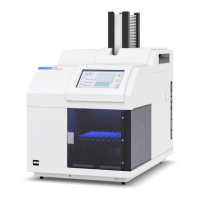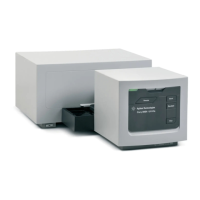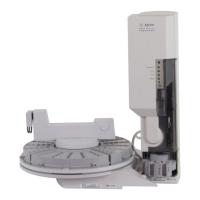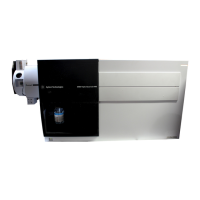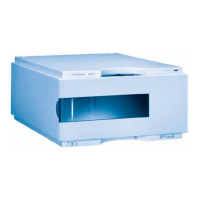11 Configuration
178 Operation Manual
MSD Configuration
System-level communications
When the GC and other Agilent instruments that support enhanced communications, such as
an MS or HS, are configured together, they communicate with and react to each other. The
instruments share events and data to provide interaction and efficiency. As the state of one
instrument changes, the other instruments react accordingly. For example if you start to vent
an MS, the GC automatically changes flows and temperatures. If the GC enters its "sleep" state
to conserve resources, so do the MS and HS. When programming the HS, the HS automatically
incorporates the current GC method setpoints to calculate timing and throughput.
One of the primary advantages of enhanced communications is that instruments can protect
themselves and each other from damage. Events that cause this type of interaction include:
• GC shutdowns
• MS venting
• MS shutdowns
Another advantage of enhanced communications is the convenience provided at a system
level:
• Consolidated EMF tracking
• Synchronized instrument clocks (requires an Agilent data system)
• Synchronized instrument schedules (sleep/wake)
• Pass-through display of connected instrument errors to the GC display
MSD configuration
The method for configuring a connected MSD varies based on the model of MSD being used.
5977B GC/MSD
The 5977B connects to the GC via an LVDS cable to one of the ELVDS communication ports
on the rear of the GC. Because of this, the GC treats the MSD as a detector. No communication
configuration is necessary.
To change the MSD settings:

